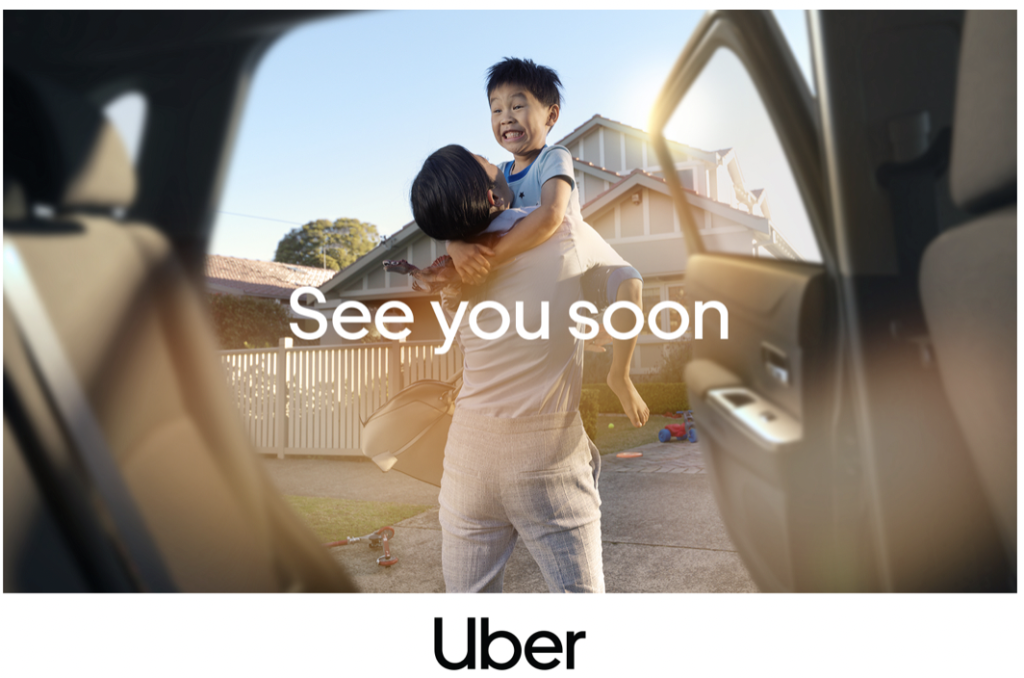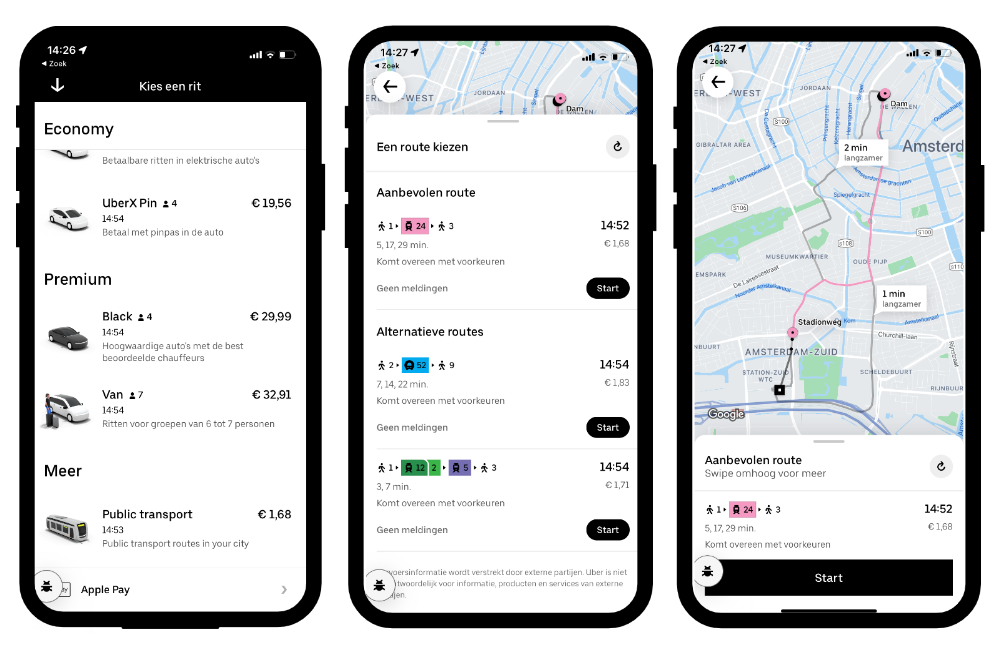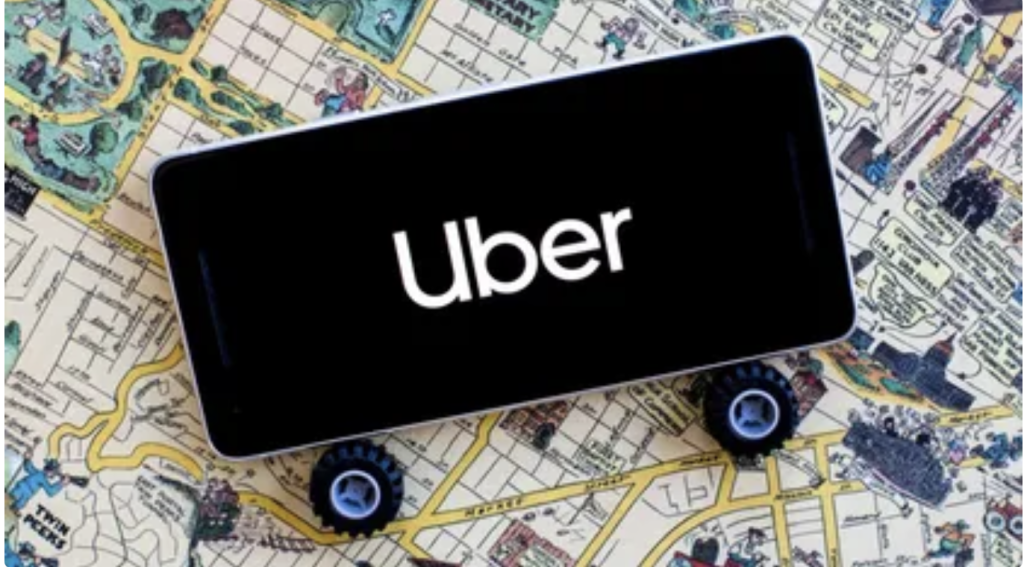
Riders say ‘see you soon’ in new brand campaign by Uber Australia CC BY 2.0
The sharing economy, showcased through platforms like Uber, embody the sheer power of digital platforms in transforming the traditional regimes of an industry. Ubers’ triumphs in utilising the sharing economy underscores how the formation of these apps can facilitate the maximisation of innovation and efficiency across digital platforms.
Why should we care to share?
Sharing economy in its entirety is an economic model explains the way people exchange knowledge, resources, and assets through the encouragement of community interaction. This is carried out through the leveraging of digital platforms that accommodate peer-to-peer transactions that allow the concordance of a fulfillment of needs from those people/entities that are willing to provide. In addition to augmenting the utilisation of resources, the sharing economy leverages technology. The model has reshaped the trajectory of the economy and its growth by placing accessibility at the forefront of economic growth.
In concordance with the sharing economy, the advent of digital platforms has catalysed a profound shift in traditional business models. The established industry approach to success that was a heavy ownership-centric approach has now repositioned to a more access-based model, as businesses are being forced to acknowledge the increasing demand for user flexibility and access in their choices. The ability for our needs to be met at the grasp of our technology projects the need for business models to not discard the importance of adaptability. These platforms and their significance in our everyday decision making have resulted in a reduction of intermediaries and concentrate on the direct-to-consumer strategy.
Uber as a Paramount
Uber stands as a focal example of the sharing economy and epitomises the influence that online platforms can have on an industry like a driving service. Uber, founded in 2009, emerged as a revolutionary idea that would grant the ease of collaboration and consumer desires. With the mission of transforming the way people perceive and use transportation services. The ethos behind Uber was simplistic yet effective:
“A tech company that connects the physical and digital worlds to help make movement happen at the tap of a button. Because we believe in a world where movement should be accessible”. – Uber, 2021
This innovative way of collaboration disrupted the traditional regimes of taxi services as it emphasised its superiority with its accessibility, cost efficiency convenience for not only its users but also the drivers operating in concordance with Uber.
The apps growth and consequently its dominance within the transportation industry can be attributed to an array of factors. Firstly, the mobile app is logistically a user-friendly method of providing consumers with an efficient experience on their own accord. The immediacy of the service is a key point of differentiation from the pre-existing industry and its operation; as ordering their own ride gave users a newfound control which steers away from the established pre-booking that is required for taxis.
Additionally, Uber transformed the driving aspect of the transportation industry. In allowing individuals to monetise their personal vehicles into income-generating assets which appealed to a widespread of people. This model is extremely effective as it raises driver appeal and consequently in increasing the frequency and availability of Uber for its users.

Uber Launches Comfort Electric Ride-Hailing Tier, EV Tools for Drivers by Angela Lang/CNET CC BY 1.0
Depicts how Uber locates drivers that nearby, estimate fares and time expected. Tracking is also available for convenience , thus highlighting the platforms ease for the user.
History of Uber
Ubers influence was not isolated to the sharing economy expansion but it also largely paved the way for future digital platform innovation. In transforming the transportation industry, Ubers functionality set a new wave of community interaction due to the plethora of benefits that ensure a seamless user/driver experience.
Uber is a marvel of contemporary technology; capitalising on the weaknesses of the taxi industry and used the presence of digital platforms in our everyday lives to make their service extremely accessible and providing a simplistic way of getting from A to B. It’s cashless payments, tracking abilities and ridesharing opportunities not only makes it economically superior by reducing the carbon footprint but also displays that Uber as a brand is environmentally conscious.

“Uber Launches Comfort Electric Ride-Hailing Tier, EV Tools for Drivers” by Antuan Goodwin is licensed under CC BY 1.0.
Is there greater attributes towards Uber’s success than just the Sharing Economy?
While it is undoubtable that Uber has been a transformative innovation for the realm of traditional industries, isolating its success to the sharing economy oversimplifies the complexity of ubers operation. Although the sharing economy is a driving force behind the dominance of digital platforms in our everyday lives, promoting innovation, efficiency and resource utilisation, Ubers ascendancy can be attributed to other varying elements such as its market positioning, user centric-approach, business model strategy and technology adoption.
Their triumphs cannot be solely credited to their utilisation of the sharing economy, but also their coordination of digital foresight, data analysis and the provision of a user-friendly service app. With the brand emphasis on ‘disruptive technology’ (Glen M. Schmidt, Cheryl T. Druehl, 2008) in creating a simplified user experience their also arises complications. With the profound presence of uber in a digital space, a multitude of issues regarding regulation and policy arise when such a business transforms traditional regimes of an existing industry.
This can be seen in the 2017 dispute of the London council revoking the license to operate uber within London city due to ‘a lack of corporate responsibility’ Fullard, 2019. The accessibility for drivers and users and the ease in which this process operates is not without contention as the problematic elements of the app surround the lack of verification and security within the deeming it controversial.
As a consequence, Uber has tightened its security and combatted these accusations. This response is subject to the needs of its consumers and embodies the exchange in perception of a brand between the consumer and business and the importance of a sharing economy to allow the feedback and progression for Uber as a brand.
Has Uber created a Monopoly?
This paradigm shift can be seen through the research of PwC that prevailed the influence that sharing economy sectors can generate from the redefining of traditional industries, with the potential by 2025 to be worth $355 billion. Ordering variations of uber that have since been created such as DiDi or Lyft but the traditional household name still being order an ‘Uber’ instead of a taxi, displays the influence that Uber has had on our society and the reprogramming that aligns our decision making to reflect our digital lifestyle. Moreover, its success in diversifying into different market segments such as the food delivery industry has been a service extension of their existing brand which has proved to be greatly successful; adding to the innovation associated with ‘Uber’ as a brand.
“Uber confident on profit as ride-sharing rebounds in 2023” by Yuvraj Malik is licensed under CC BY 2.0.
The concept has multifaceted impact on the way in which people collaborate and consume across digital platforms. The rise of the sharing economy, embodied by platforms like Uber hallmarks an immense shift in how contemporary society perceive and engage with the world around us. It is a testament to the capabilities of innovation in a digital space. As users, the continuum of consumption and distribution across various technologies blur the line between consumers and dividers. The favorability of apps like Uber has revealed a newfound digital age with online business capabilities where users can benefit financially and utilise the resources available to them.
By Sara Harlock
Bibliography
Is Uber’s Growth Plan Too Good to Be True? Find Out Now. (n.d.). Www.youtube.com. Retrieved October 7, 2023, from https://www.youtube.com/watch?v=SZn7Yihixjg
John, N. A. (2016). The age of sharing. ResearchGate. https://www.researchgate.net/publication/311495143_The_Age_of_Sharing
Miguel, C., Martos-Carrión, E., & Santa, M. (2022). A conceptualisation of the sharing Economy: towards theoretical meaningfulness. In Springer eBooks (pp. 21–40). https://doi.org/10.1007/978-3-030-86897-0_2
PwC. (2015). Sharing or Paring? Social Service Review, 47(1), 95–102. https://doi.org/10.1086/642933
Social media platforms and content exposure: How to restore users’ control. (2019, June 9). Sage Journals. https://doi.org/10.1177/1783591719847545